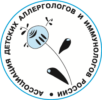Method and safety of nasal allergen provocational test with house dust mite allergen in children with bronchial asthma and allergic rhinitis
O.V. Trusova, A.V. Kamaev, N.L. Lyashenko, I.V. Makarova
Pavlov University, Saint Petersburg, Russia
ALLERGOLOGY AND IMMUNOLOGY IN PEDIATRICS, Volume 62 • Number 3 • September 2020, pp. 15 – 22
DOI: 10.24411/2500-1175-2020-00002
Relevance. Nasal allergen provocation test (NAPT) is useful for revealing the causative allergen in patients with allergic rhinitis (AR). Currently, NAPT is not sufficiently standardized, there is also doubt about its high safety.
Aim of the study. Safety assessment of NAPT with house dust mite (HDM) allergens in children with AR and AR in combination with bronchial asthma (BA) in daily clinical practice.
Materials and methods. For the analysis, cases of positive NAPT in 128 patients were taken: 69 boys (age 5 to 15 years, average 9.2 ± 1.7) and 59 girls (age 5 to 17 years, average 11.6 ± 2.1) with AR or AR in combination with BA, with positive skin prick tests with HDM. Positive NAPT was recorded according to clinical signs and a decrease in peak inspiratory flow rate through the nose at least 20% from baseline. The protocol of the test included the introduction of a control fluid into one nostril, then dilutions of the allergen 10–4, then 10–3, 10–2, 10–1, and the undiluted allergen. Post-trial follow-up included monitoring of complaints, adverse events, registration of required therapy, and control spirometry.
Results. In 128 cases of positive NAPT with HDM, there were no serious adverse events, systemic reactions, bronchospasm, and cases of treatment requirements higher than the standard. In 1 case, a patient aged 13 years had a voice hoarseness 2 minutes after the introduction of an allergen at a dilution of 10-2. The reaction was stopped with cetirizine within 25 minutes after administration. In all patients, reactions to the allergen were completely resolved within 30 minutes of observation after the test.
Conclusion. NAPT with HDM allergens is safe can be performed on an outpatient basis.
It is safe to conduct NAPT according to a tested graduated method with a clinical and objective instrumental assessment of the reaction to an allergen and the observation of the patient after the test.
- Agache I., Bilo M., Braunstahl G.-J., Delgado L., Demoly P., Eigenmann P., et al. In vivo diagnosis of allergic diseases—allergen provocation tests // Allergy. 2015; 70: 355–365.
- Augé J., Vent J., Agache I., Airaksinen L., Campo Mozo P., Chaker A. et al. Position paper on the standardization of nasal allergen challenges // Allergy. 2018; 73: 1597–1608.
- Kowalski M.L., Ansotegui I., Aberer W., Al-Ahmad M., Akdis M., Ballmer-Weber B.K. et al. Risk and safety requirements for diagnostic and therapeutic procedures in allergology: World Allergy Organization Statement // The World Allergy Organization journal. 2016; 9: 33.
- Балаболкин И.И. Современные подходы к проведению аллергенспецифической диагностики при аллергических заболеваниях у детей // Аллергология и иммунология в педиатрии. 2011. № 1 (24). С. 17–26.
- Rondón C., Blanca-López N., Campo P., Mayorga C., Jurado-Escobar R., Torres M.J. et al. Specific immunotherapy in local allergic rhinitis: A randomized, double-blind placebo-controlled trial with Phleum pratense subcutaneous allergen immunotherapy // Allergy. 2018; 73: 905–915.
- Rondón C., Campo P., Salas M., Aranda A., Molina A., González M. et al. Efficacy and safety of D. pteronyssinus immunotherapy in local allergic rhinitis: a double-blind placebo-controlled clinical trial // Allergy. 2016; 71: 1057–1061.
- Федеральные клинические рекомендации по диагностике аллергических заболеваний. 2015. Доступно по: www.raaci.ru. Ссылка активна на 10.12.2018.
- Трусова О.В., Камаев А.В., Ляшенко Н.Л., Макарова И.В. Подтверждение этиологического диагноза у детей с аллергией на клещей домашней пыли как необходимый этап при планировании курса аллергенспецифической иммунотерапии. Обзор литературы // Российский аллергологический журнал. 2017; 6: 98–106.
- Muraro A., Lemanske R.F. Jr., Hellings P.W., Akdis C.A., Bieber T., Casale T.B. et al. Precision medicine in patients with allergic diseases: airway diseases and atopic dermatitis-PRACTALL document of the European Academy of Allergy and Clinical Immunology and the American Academy of Allergy, Asthma & Immunology // J Allergy Clin Immunol.2016; 137: 1347–1358.
- Eguiluz-Gracia I., Testera-Montes A., González-Visiedo M., Pérez N., Ariza-Veguillas A., Salas M. et al. Safety and reproducibility of Nasal Allergen Challenge // Allergy. 2019; 00: 1– 10.
- Зисельсон А.Д. Поллиноз у детей // Ленинград: Медицина, 1989. — 160 с.
- Супрун Е.Н. Аллергодиагностика // Аллергология и иммунология в педиатрии. 2015. № 1 (40). — С. 38–44.
Trusova OV, Kamaev AV, Lyashenko NL, Makarova IV. Method and safety of nasal allergen provocational test with house dust mite allergen in children with bronchial asthma and allergic rhinitis. Allergology and immunology in Pediatrics. 2020;62(3):15-22. (In Russ.) https://doi.org/10.24411/2500-1175-2020-00002
For correspondense
Olga V. Trusova MD, PhD, Associate professor, Department of Therapy with the course on Allergy and Immunology, Pavlov University
ORCID 0000-0002-0854-1536
Address: L’va Tolstogo str. 6-8, Saint Petersburg, Russian Federation
E-mail: o-tru@mail.ru
